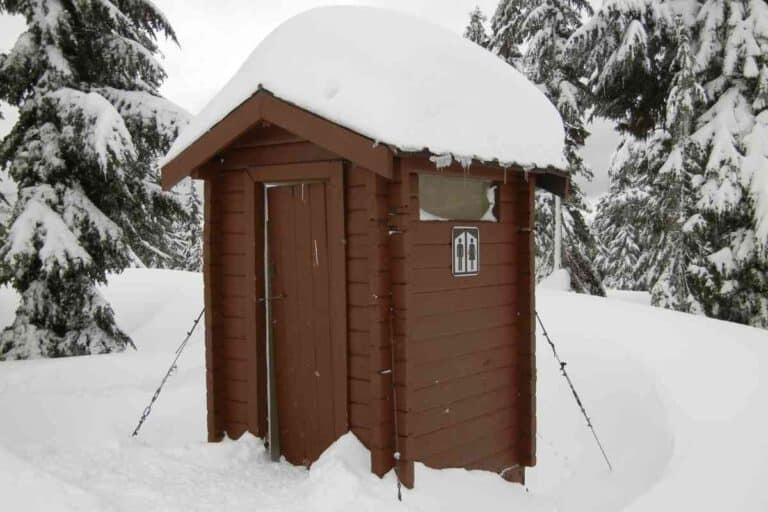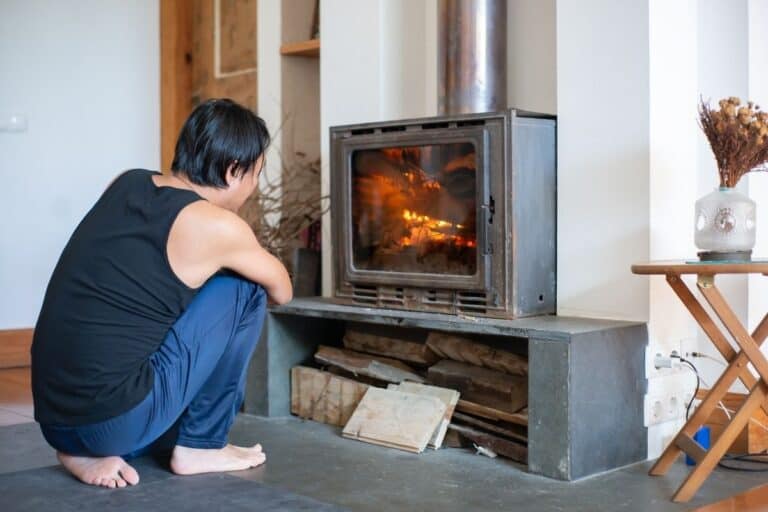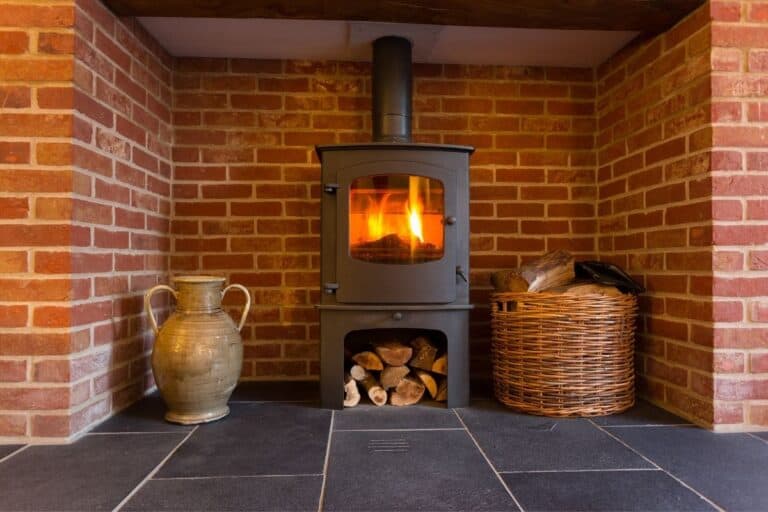Off grid living for Beginners: An Extensive Guide
Many people are tired of living in the city, being cooped up all day, and relying on electricity to power their homes. They want more freedom, adventure, and a better understanding of our natural world. They want off-grid living. This is an introduction for beginners about what it means to live off the grid so that you can make an informed decision about whether or not this lifestyle is right for you.
In this article, I will define off-grid living and discuss how it can offer many benefits. Then I’ll give you a few tips on what to do before starting out so that your journey can be as safe and successful as possible. Finally, we’ll go through the financial considerations for going off-grid and give you some tips on making it an affordable undertaking.
What Is Off-grid Living?
Off-grid living is when someone chooses to live in a self-powered house or community without connection to the public grid. This means that they rely exclusively on renewable energy sources such as solar and wind power for their utility needs. The goal of off-grid living is not only to create less pollution but also to take charge of one’s own life and be free from outside influences.
Off-grid living does not have to be either/or. Rather, it means different things to different people because of the many reasons someone might choose this lifestyle: from a rural family who wants their children to grow up in an idyllic pastoral community, to urban professionals who get solar panels.
To some, off-grid means being entirely off any sort of grid, public or private. Some would also argue that an internet connection is a type of grid connection, even if it is a wireless one. To others it means living with no connection to the public power grid, relying on renewable power sources such as solar and wind power for their electricity needs. But they may still be connected to the sewer system and public water supply.
Off-grid living doesn’t have to be all or nothing. The main point is that disconnecting from the grid (entirely or in part) allows one to decide for themselves how they want to live, instead of having someone else make those decisions for them – or at least have more control over their lives than most.
Why Would You Choose to Live off the Grid?
Some people choose to live off the grid because they don’t want government interference in their lives. Others may have religious or political beliefs that prohibit them from using public power sources, such as nuclear energy. For others, it’s mainly for economic reasons. And even others simply happen to live in a remote location where it’s not feasible to connect to public utilities.
Off-grid living means you can have a lifestyle that’s more in line with your own values and beliefs. You don’t have to follow the social norms that dictate what you buy, how much power you use, and where you live based on someone else’s definition of success or status.
You get to decide for yourself how best to balance energy usage between conservation and consumption – even if it means you have to limit your energy use due to limited power production.
While the initial costs of living off-grid can be high, the long-term savings can be impressive. There are also other potential benefits to off-grid living such as independence from energy company’s price hikes and energy taxes, no power outages or brownouts during storms, provided there is backup battery capacity at the house, and the ability to live without fear of peak-time power cuts.
What Are Some Drawbacks to This Lifestyle?
Generating your own power and getting your own water takes work and more time than just flipping a switch. Building your own off-grid system is challenging and will take time. You should also expect to devote some effort to maintain upkeep as well as perform troubleshooting from time to time.
Another significant drawback is the previously mentioned initial costs of living off-grid, which can be prohibitively high in some cases. However, if you can manage to find a way to afford it, there are some other benefits, as mentioned in the post, that might make this lifestyle more appealing. In order to make it less of a financial burden, many people start out small and over time upgrade their home’s energy systems.
Off-grid living is not for everyone; some people will feel burdened without easy access to the public grid. But for those who prioritize freedom and self-reliance over convenience, living off the grid could be an ideal lifestyle.
How Do I Go about Getting Started with This Lifestyle?
To live off the grid you will have to decide how to provide your own utilities – unless you are willing to be without some or all of them.
First, decide if you want all the conveniences of a modern home or not. Perhaps you don’t mind roughing it by having only minimum needs met and are happy with just a few lights powered by a car battery and a composting toilet. Or maybe you want all the conveniences that a modern home has.
Next lay out your budget for supplying these needs – what will it cost? In the following sections, we’ll discuss various options for setting up off-grid homes and their related costs.
Finding the Right Property
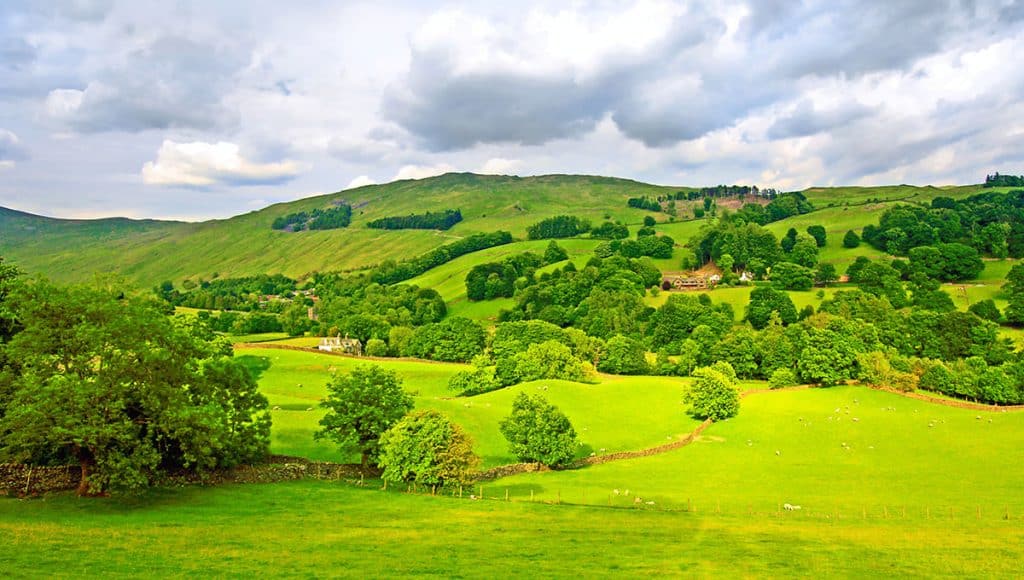
Your first step is to find a property in a location that is suitable for living off the grid.
One important factor is whether you are allowed to live off the grid in your area. In many cities, building codes or zoning ordinances make it a requirement that properties are connected to some or all public utilities. Going through a lengthy process to get an exception or change the law is an option but far from guaranteed to be successful. In most cases, you will likely be better off moving to a location without such restrictions on you your private property.
Finding the right property is a big decision, and you should research your preferred locations and find out about potential local zoning issues before spending the time to look for specific properties. Here are some restrictions that you should typically look out for:
- Building codes related to septic systems and sewage are a factor. In some areas, homeowners are required to connect to the municipal sewer system and have it approved by the local authorities.
- Building codes related to well water and cisterns are also factors. In many locations, there are restrictions on the depth of your well or how much water can be stored in a cistern (or both).
- Restrictions on off-the-grid power might prohibit you from using solar panels, wind turbines, generators, or any other type of private power supply.
- How rigid are the rules? In some cases, these issues can be resolved by applying for a permit or getting approval from local authorities; in other cases, they might need to simply be taken into account when deciding where to look for your off-grid living space.
When you have found a location that allows for living off-grid, here is what to look for in a property:
- A property with sufficient space for your needs. This article provides some great advice on how much land you need in order to start growing your own food.
- Access to high ground where you can place your solar panels, wind turbine, or other power supply.
- Access to water, ideally a well.
- Accessible heat sources, typically wood.
- Land that can be cultivated in a sustainable way, preferably without gradually depleting your resources.
- The property should be affordable to you and not encumbered by debt.
Do I need a big property to live off-grid?
You do not need a huge property to live off-grid. Many people have less than an acre and still produce enough water and electricity for their needs.
Although I do recommend you consider how much land you will need long-term before buying a property. You may not need a lot of land right now, but that may change in the future. Many people get into self-sufficiency only to later realize that they should have bought more land for their various projects.
Housing
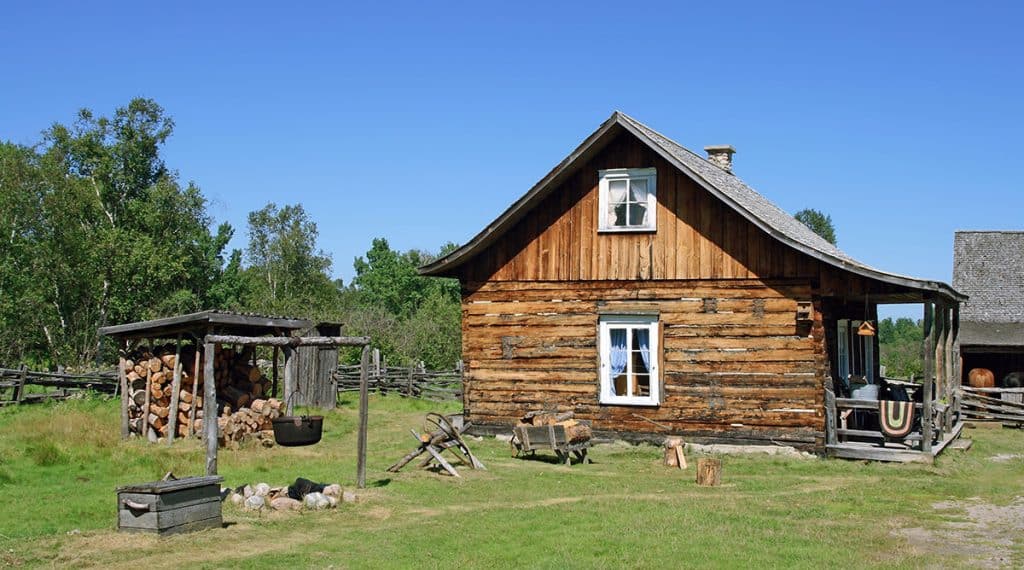
What type of home is best for off-grid living?
Unless you already know what your dream house should be, you might want to start with renting or borrowing an RV or a similarly affordable and movable home. This way you are able to live for a while in an off-grid home, get a feel for where it should be located on the property and its orientation without spending too much money.
While any type of home can be used for off-grid living, size and insulation are important factors. A small home takes less energy to heat and tends to use less electricity. A well-insulated house also requires a lot less energy to heat or cool down.
With this taking into account, these home types would be considered great for living off the grid:
- Earthships: the earth’s natural insulation can help provide a comfortable temperature in the house
- Tiny house: Easy to build and require very little energy to heat due to their size
- Yurt: heavy, durable, and moderately movable. With the right amount of insulation, you can stay warm for winter with a small wood stove.
- Log cabin: small, some in easy-to-build kits.
- RV: affordable with a layout that can accommodate a family.
- Mobile home: Affordable with a layout that can accommodate a family
A key part of the appeal off-grid living has for many is its minimalist lifestyle and economy, but you don’t have to live that way. If you are willing to fork the money for a bigger and more expensive system, there is no practical limit to how luxurious you can get.
How to Generate Off-Grid Electricity?
The two most popular of personal electricity generation are solar and wind power.
Solar panels are the most common. The solar panels generate electricity from sunlight and store it in a battery for later use. Benefits of solar panels are:
- Inexpensive
- Almost maintenance-free as there are no moving parts
- Versatile as they can be used in many different ways
Drawbacks of solar panels:
- Requires good sunlight to work efficiently and generate sufficient energy. Solar panels are not very practical in all areas or throughout the year.
- Requires good weather conditions to maintain power generation.
- Can be expensive if you live in an area with poor sun exposure and need more panels than average
The cost of solar panels depends on how large your system is and what types you purchase. Building an 8 kW solar system would cost around $29,000 before tax incentives, while a smaller 4 kW system would run you about $15,000.
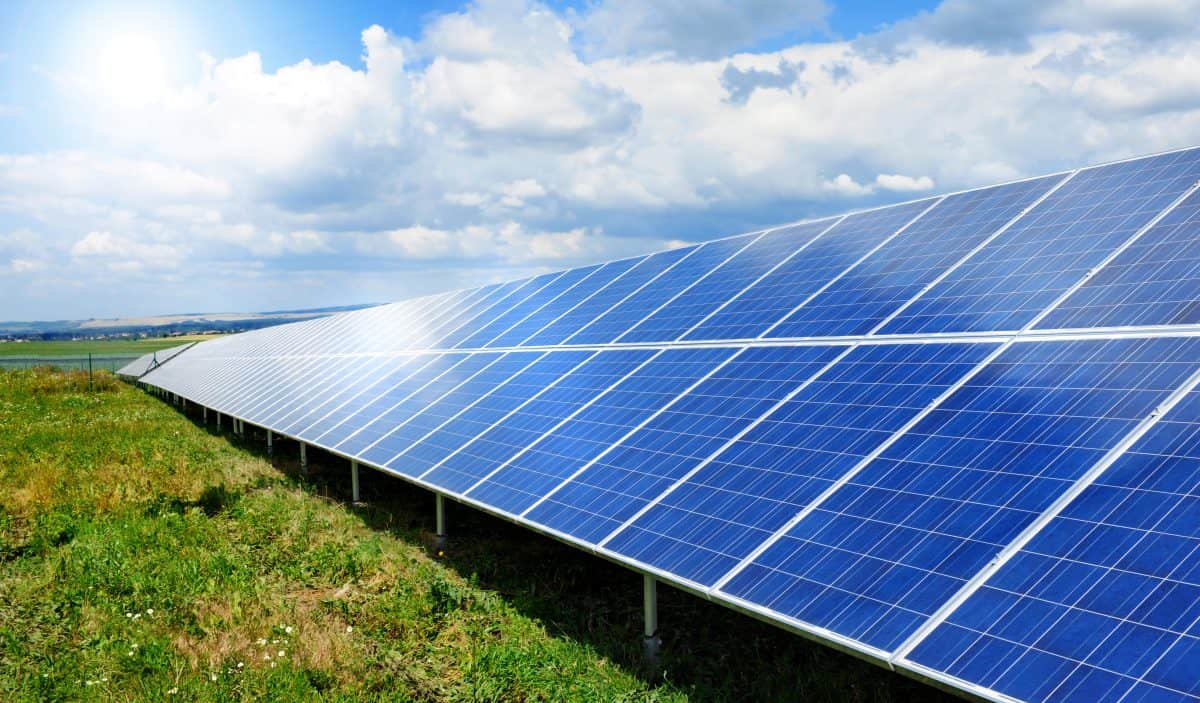
Wind turbines generate electricity from wind by rotating propellers or blades around an axis. Wind turbines can provide significant amounts of electricity and are typically coupled with batteries for storage purposes.
In the last few decades wind turbines have become much cheaper; now they are available for less than $7,000 per kilowatt of installed capacity.
Benefits of wind turbines are:
- Can withstand extreme weather and will work under most conditions as long as there is wind.
- No need for sunlight. This means that wind turbines can generate power during the night.
- Great for northern climates and cloudy regions.
Drawbacks of wind turbines:
- Often requires a permit. Some people must go through a lengthy permitting process to install one because they can be seen as eyesores or threats to particular species and habitats.
- Maintenance costs can be high, depending on how frequently it is used and the environment in which it operates.
- They need an average wind speed of about 13.5 miles per hour to be economically viable.
The cost of wind turbines depends on the desired size and output. A 1.5 kW turbine would cost approximately $10,000 to purchase and provides 2,600 kW over a year if installed in an appropriate location under the right conditions.
Note, that both solar and wind turbines may be eligible for significant federal and state tax credits which could cut your costs by thousands of dollars.
Heating Your Home Without Natural Gas or Electric
One of the primary reasons people opt to live off-grid is because it’s cheaper. The average monthly cost for natural gas ranges from $3 in Florida to $60 in Michigan. Electricity rates are typically higher, at roughly twice the cost of heating with natural gas.
By far the most common off-grid heat source is firewood. This could be wood from your own property, purchased firewood, or even pellet or corn heaters.
Of course, you’ll need to have a place for your firewood from which it can be conveniently delivered and stored. This could be in an outbuilding, shed, or built into the house itself. You will also need a stove to burn the wood.
To heat a 1,000 square foot home with wood, you’ll need 1/3 to 4 full cords per winter month depending on home size, insulation, and how efficient your wood stove is. Two cords will cost roughly $600-$900 dollars depending on where you live and how much firewood is in season. If you want to find out how much land you will need in order to heat your home with your own firewood? Check out this article for an in-depth answer.
How about hot water?
There are generally three options for getting hot water when living off-grid:
Tankless prophane water heaters
These units have a heating element that only comes on when hot water is needed. They are great for off-grid as they only use energy when needed and very easy to use. They are also more affordable than a tanked water heater.
The downside to propane heaters is that you will need to buy propane bottles or install a propane tank which can be expensive and will make you rely on an external supply.
Solar water heaters
These units are using the sun’s energy to heat up a water tank. They are expensive to install, but the heat they produce is free and thus perfect for an off-grid home where energy is in high demand.
Solar water heaters are particularly popular in the south of Europe where there is a lot of sun and water resources are scarce. They can also be used in northern climates but will need a backup heater during the winter.
Wood boiler
If you already have an abundance of firewood, a wood boiler is a perfect choice for heating your water. They are quite reliable and even produce power to fuel other appliances like an electric water heater.
The downside to a wood boiler is that they require work to maintain. Since they are a traditional heating system, you need to make sure the fire is always going, and if it dies out for some reason, it will take a while before you can get a warm shower.
Some wood boilers can take both firewood and pellets, which makes it easier to maintain and provides a backup heating system if your firewood runs out.
There are also other options, such as geothermal and air-to-water heat pumps. But although they are about three times as efficient as electric heat, they still consume more electricity than most ordinary solar panels can produce – especially during the winter when they are needed the most.
Water Harvesting

Water can be harvested from a variety of different sources:
Rainwater
Rainwater is the most readily available and can be collected by installing attachments on your roof’s downspouts that lead the water to rain barrels. Depending on how much water you need this can be a great option, but it can be difficult to provide for larger families in some locations. The solution for this problem often is to build rain roofs and use sufficiently large storage tanks.
Wells
Many rural homes still have residential wells on their property for collecting rainwater, and these can be very efficient methods of harvesting water for an entire household. In many cases, wells are more than sufficient to provide enough water for your family’s needs.
If you don’t already have a well on your property, it’s often possible to install a well, although the cost will vary. Drilling and installing a well typically costs between $1,500 and $12,000 depending on the depth, soil composition, location, etc.
Spring water
If you have a property with a spring you a very happy camper! Springs offer an easy way to collect water and provide enough for your household. Springs can provide a lot of water with little to no cost to you. All you need are a few pipes and a way to divert the water into tanks. Make sure you collect sufficient water for the dry season, as a spring may dry up during a drought.
If you don’t have a spring, but a river or other running water is going through the property, you may be tempted to pull water for personal use. Often this is illegal without a permit as you may not own the water. Make sure to check if you own the water rights before using water from a stream.
Regardless of how you harvest water, always ensure that it is clean and safe to drink. Private well water should be tested at least annually. Water that is not obtained from a deep-well system should be tested more frequently, as it’s more likely to get contaminated.
Managing Gray and Black Water
Wastewater should be disposed of in a way that doesn’t contaminate other resources. Gray water is slightly dirty water from the kitchen sink, bathtub, or washing machine and is generally safe to use for irrigation. Just make sure to use biodegradable soap when washing dishes and showering so that the soap doesn’t contaminate soil or groundwater.
Blackwater is more contaminated wastewater from the toilet, and should not be used for irrigation. One way to dispose of black water is to build a septic tank.
Septic tanks work by allowing the solids present in blackwater to settle at the bottom of a compartment, while liquids flow through an outlet pipe. The liquid that leaves the tank is safe for use on plants whereas the heavy sludge remains in the tank until it is broken down.
This a great and easy-to-use invention. However, a new septic system costs approximately $6,000, so you may prefer to find alternative solutions that are less costly.
A great solution to save water and avoid the expense of a septic tank is getting a dry toilet system. A dry-composting toilet digests and composts human waste using bacteria. They typically cost from $1.500, but you could also build your own composting toilet outhouse for next to nothing. The initial challenge to having a composting toilet may be convincing your family to accept it.
Off-grid Appliances
Just because you live off-grid it doesn’t mean you will have to live primitively – unless that’s what you prefer. Modern appliances and technologies will still be available for you to use. The challenge with off-grid living is that you will not have unlimited power and water available, so you will need to use energy-saving appliances. The good news is that there are plenty of viable options.
Energy-saving technologies have made modern appliances much more suitable for off-grid living. A refrigerator typically uses 1 to 2 kWh per day which is two-thirds less than the fridges of two decades ago. The Energy Star label is good guidance when shopping for appliances but also check their rated energy consumption. Also try to look up the European energy label for any product you consider buying, as they provide a very useful overview:
If you have limited sources of electricity, another solution is to use propane-driven appliances. The downside to propane-powered fridges and freezers is that they are not as efficient and use about three times the energy of an electric appliance. Besides, you may technically be off-grid, but a big part of living this lifestyle is self-reliance in which case utilizing propane defeats the purpose.
If you want to go old-school, a root cellar may be just the thing for you. A root cellar is a basement or large outdoor underground structure that stores vegetables, fruits, and other foods to keep them cool in the summer months. It takes time to build a root cellar, but they need no electricity and minimal maintenance.
In regards to cooking appliances, there are multiple options besides electricity. One such option is to use a wood cooking stove as mentioned above. These old-style stoves will last for decades, provide a pleasant atmosphere, and are free to run as long as you provide your own firewood. The downside is they have to be constantly refueled and take time to heat up.
Propane ovens and are also a great option. While they do rely on an outside fuel source, you can cook for a long time with a standard 20 or 33-pound tank.
A final option for cooking appliances is solar cookers. Perhaps you live in a desert environment where a wood cooking stove is the last thing you need when cooking lunch, then consider cooking some of your food with the power of the sun and only use gas or wood in the evening, when the sun has set.
Finances: How Much Does It Cost to Live off the Grid?
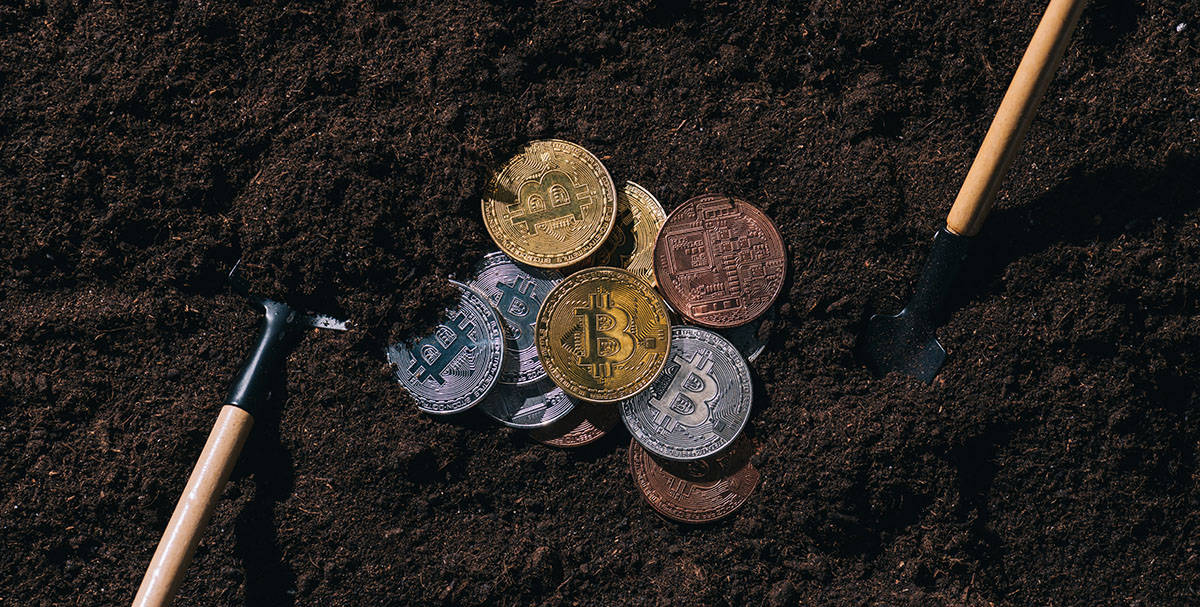
Living off the grid is can be very cheap or very expensive, depending on your location and needs.
Factors that significantly affect the cost of off-grid living include how much electricity you need, what type of solar or wind power system is used to generate that electricity, and whether a generator will be needed as a backup.
The fuel for cooking and heating water also affects the total budget. Wood costs less than propane but takes more work and time to keep it going while gas is easy to use but also makes you dependent on others for many of your basic needs.
The size of your home and types of materials used to construct your house also affect cost. A mobile home is cheaper than an Earthship but Earthships require little to no climate control, so you could save in the long run. The use of green building techniques like insulation and passive solar design can keep costs down as well by using less energy. Here are 10 Ways to Get Free or Cheap Building Materials.
Putting all of these factors together, a person could save thousands a year and be more independent in the long run by living off the grid. But you will need to prepare well and consider which solutions work best for you and your wallet.
How much money should I have when starting out?
Again, this highly depends on the type of property and the quality, you will need to be prepared for the lifestyle and have a decent amount of savings, unless you are willing to live in very primitive conditions while upgrading your home little by little.
You’ll need to obtain several basic necessities in order to build an off-grid home:
- Land
- Building materials and tools
- Solar panels or wind turbines and batteries
- A water source
- An off-grid generator for when there’s no power
- Low-energy appliances
- Wood or other heat source
- Storage for food, water and other necessary supplies
Keep in mind that if this is your first home then there will many more expenses associated with starting out such as appliances and furniture.
The good news is that you will be able to make that money back in time as your monthly costs of living will drop dramatically. And the great news is that you have a lot of influence on how much you will spend initially. You can start with very little money if you are creative and willing to compromise on modern conveniences, or you can start with a lot of money to make your off-grid home as luxurious and comfortable as possible from the get-go.
In Summary
There are many people who choose this lifestyle as an alternative way of living, but you will need to be ready mentally and financially before taking on this challenge. Outside of getting the right size of land from the start, it is recommended to start small and then build your way into a larger project, so you don’t run out of money or energy. It is also important that you have the time for this lifestyle as it can be very demanding on your free time.
Meanwhile, some of the benefits are:
- Living in a way that is good for your health from all the fresh air and nature around you.
- Lowering your carbon footprint by utilizing renewable energy sources
- Cutting out most of your monthly bills, which will provide financial flexibility and long-term financial security
- Living a life that is more in tune with nature, which has been shown to make people happier
- Less time spent dealing with day-to-day stressors
Off-grid living may not work well with people who prefer physical convenience, and in the end, it is a lifestyle choice. It takes some adjustment and practice to find out what works for you, but once mastered; it can be the most rewarding way of life one could imagine.

![Can Microinverters Be Used Off Grid? [Answered!]](https://freedomresidence.com/wp-content/uploads/2022/05/Can-Microinverters-Be-Used-Off-Grid-768x512.jpg)
